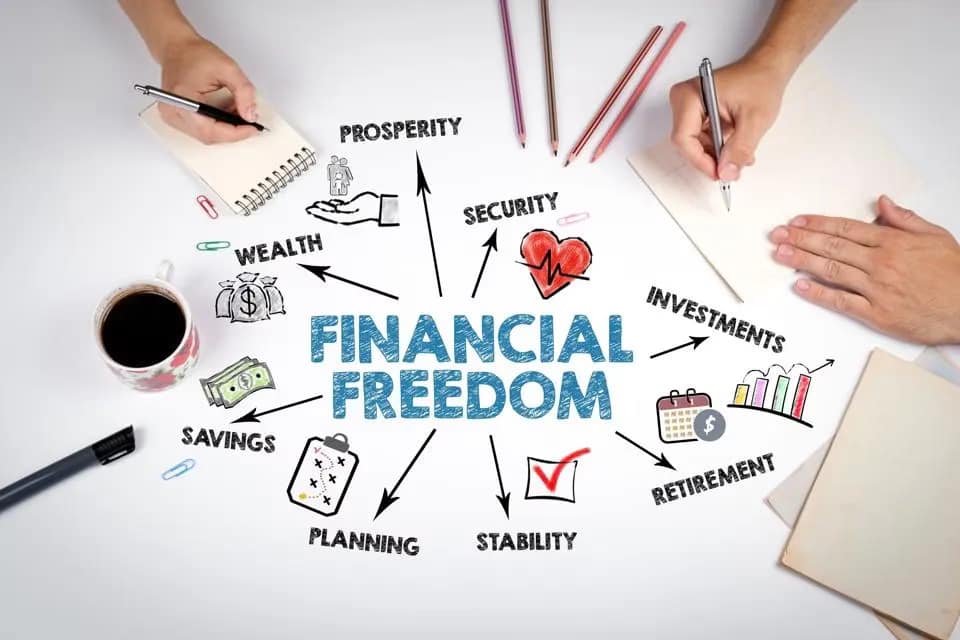Financial freedom is a state where you no longer need to work for money to cover your basic needs—it’s about having the resources to live life on your terms. However, achieving financial independence is not an overnight process; it requires careful planning, discipline, and the application of proven theories and models. In this guide, we’ll break down how to balance personal finances and achieve financial freedom step by step, incorporating famous theories like Reality Therapy, Contingency Theory of Leadership, and Identity Capital Theory.
Step 1: Define Your Vision of Financial Freedom (Reality Therapy)
Before taking any action, it’s essential to define what financial freedom means to you personally. According to Reality Therapy, setting clear goals is crucial for addressing unmet needs and creating meaningful connections with others. Ask yourself:
- How much income do I need to cover my expenses?
- What does “freedom” look like in my life? Is it early retirement, traveling, or starting a business?
By answering these questions, you create a mental roadmap that aligns with your values and aspirations. This clarity will serve as the foundation for all your financial decisions moving forward.
Step 2: Separate Personal and Business Finances (Identity Capital Theory)
For entrepreneurs or those managing multiple income streams, separating personal and business finances is critical. Identity Capital Theory emphasizes the importance of building assets—both tangible and intangible—that contribute to long-term success. Here’s how to apply this principle:
- Open separate bank accounts for personal and business transactions.
- Pay yourself a consistent salary from your business revenue.
- Seek professional advice to ensure compliance with tax laws and optimize savings.
This separation allows you to track your progress more effectively and avoid financial confusion, which can derail your path to freedom.
Step 3: Create a Budget and Stick to It (Contingency Theory of Leadership)
Budgeting is often considered the cornerstone of financial health. The Contingency Theory of Leadership suggests that different situations require tailored approaches to maximize productivity and morale. Similarly, your budget should be customized to fit your unique circumstances:
- Track Expenses: Write down every dollar you spend for one month to identify areas where you can cut back.
- Categorize Spending: Divide expenses into essentials (housing, food) and non-essentials (entertainment, luxury items).
- Set Limits: Allocate specific amounts for each category and stick to them.
A well-structured budget ensures that you live within your means while prioritizing savings and investments.
Step 4: Eliminate High-Interest Debt (Debt Utilization Model)
Debt can be both a blessing and a curse. While some forms of debt (like mortgages or student loans) can build wealth over time, high-interest debt (credit cards, payday loans) can cripple your financial growth. To leverage good debt effectively, follow these steps :
- Prioritize Payments: Focus on paying off debts with the highest interest rates first.
- Consolidate Loans: Consider consolidating smaller debts into a single loan with a lower interest rate.
- Avoid New Debt: Once existing debts are paid off, commit to living debt-free unless absolutely necessary.
Eliminating toxic debt frees up cash flow, allowing you to redirect funds toward savings and investments.
Step 5: Build Emergency Savings (Negative Liberty Concept)
Having an emergency fund provides a safety net during unexpected events, such as medical emergencies or job loss. According to the concept of Negative Liberty, true freedom comes from removing barriers and constraints. An emergency fund acts as a buffer, giving you peace of mind and preventing setbacks.
- Aim to save at least three to six months’ worth of living expenses.
- Keep this money in a high-yield savings account for easy access.
With an emergency fund in place, you’re better equipped to handle life’s uncertainties without compromising your financial goals.
Step 6: Invest Wisely (Wealth-Building Strategies)
Investing is one of the most powerful tools for achieving financial freedom. As highlighted in Investopedia’s Seven Steps to Building Wealth, earning, saving, and investing are interconnected processes. Follow these guidelines:
- Start Early: Take advantage of compound interest by beginning investments as soon as possible.
- Diversify Portfolios: Spread your investments across stocks, bonds, real estate, and other asset classes to minimize risk.
- Automate Contributions: Set up automatic transfers to investment accounts to maintain consistency.
Over time, smart investments can generate passive income, reducing your reliance on active work.
Step 7: Continuously Educate Yourself (Financial Literacy)
Achieving financial freedom isn’t just about numbers—it’s also about mindset and knowledge. Many people struggle because they lack financial literacy. To overcome this hurdle:
- Read books, attend seminars, and take online courses on personal finance.
- Stay updated on economic trends and market conditions.
- Learn from successful individuals who have achieved financial independence.
Education empowers you to make informed decisions and adapt to changing circumstances.
Step 8: Monitor Progress and Adjust Plans Regularly
Finally, regularly review your financial situation to ensure you’re on track. Use tools like spreadsheets or financial apps to monitor income, expenses, savings, and investments. If needed, adjust your strategies based on new information or shifting priorities.
Conclusion: Balancing Life and Finances for Freedom
Achieving financial freedom involves balancing immediate needs with long-term goals. By applying theories like Reality Therapy for goal-setting, Contingency Theory for situational leadership, and Identity Capital Theory for asset-building, you can create a sustainable plan that works for you. Remember, financial freedom isn’t just about accumulating wealth—it’s about gaining control over your life and choices. Start small, stay consistent, and watch your dreams become reality .
Discover more from Pasindu Lakshan Perera
Subscribe to get the latest posts sent to your email.




